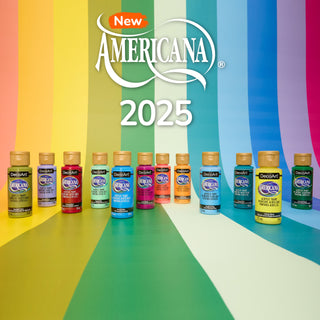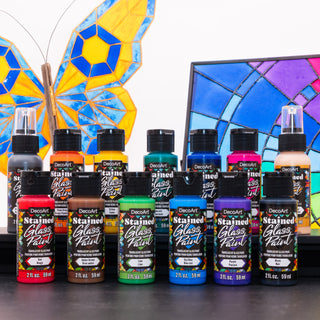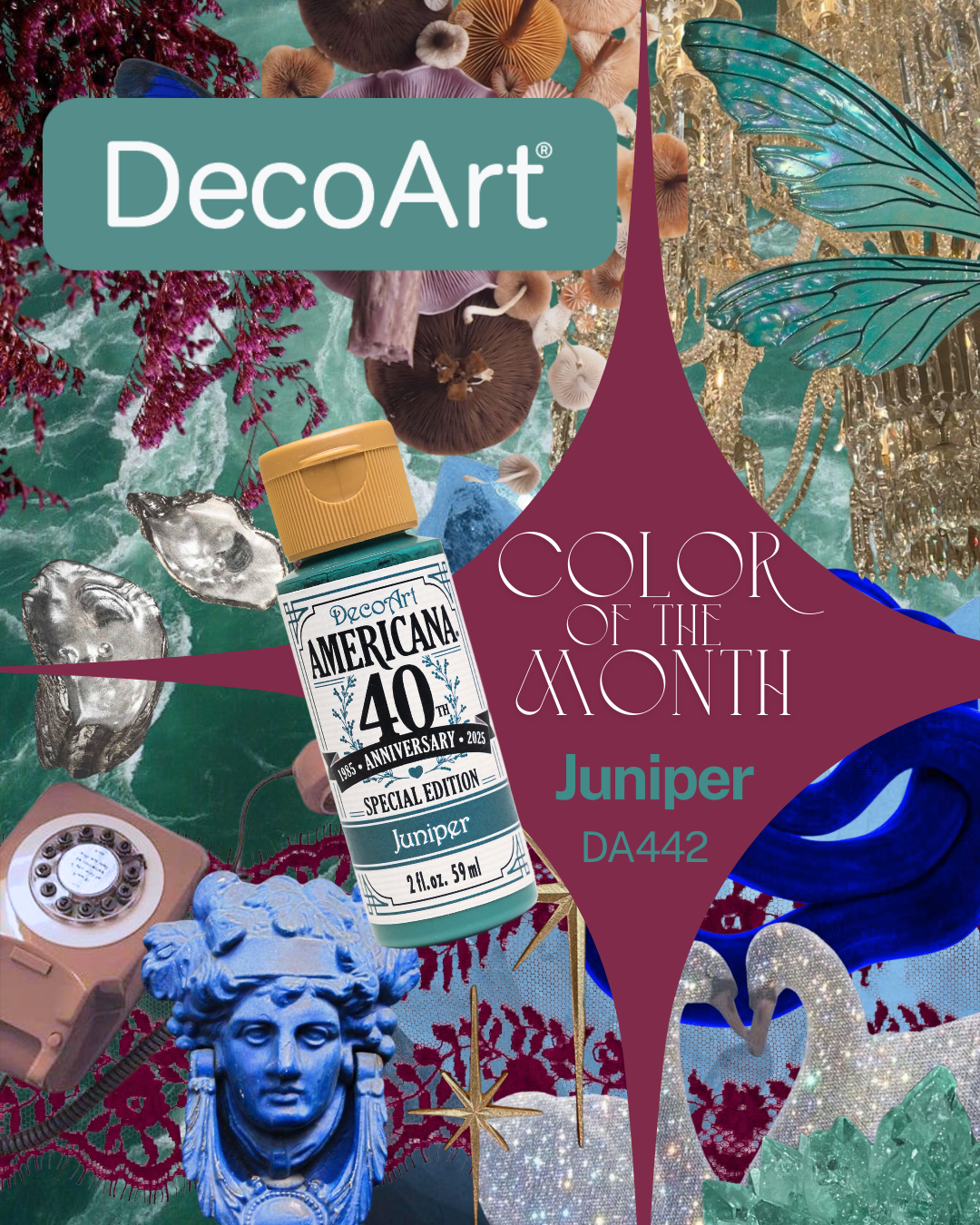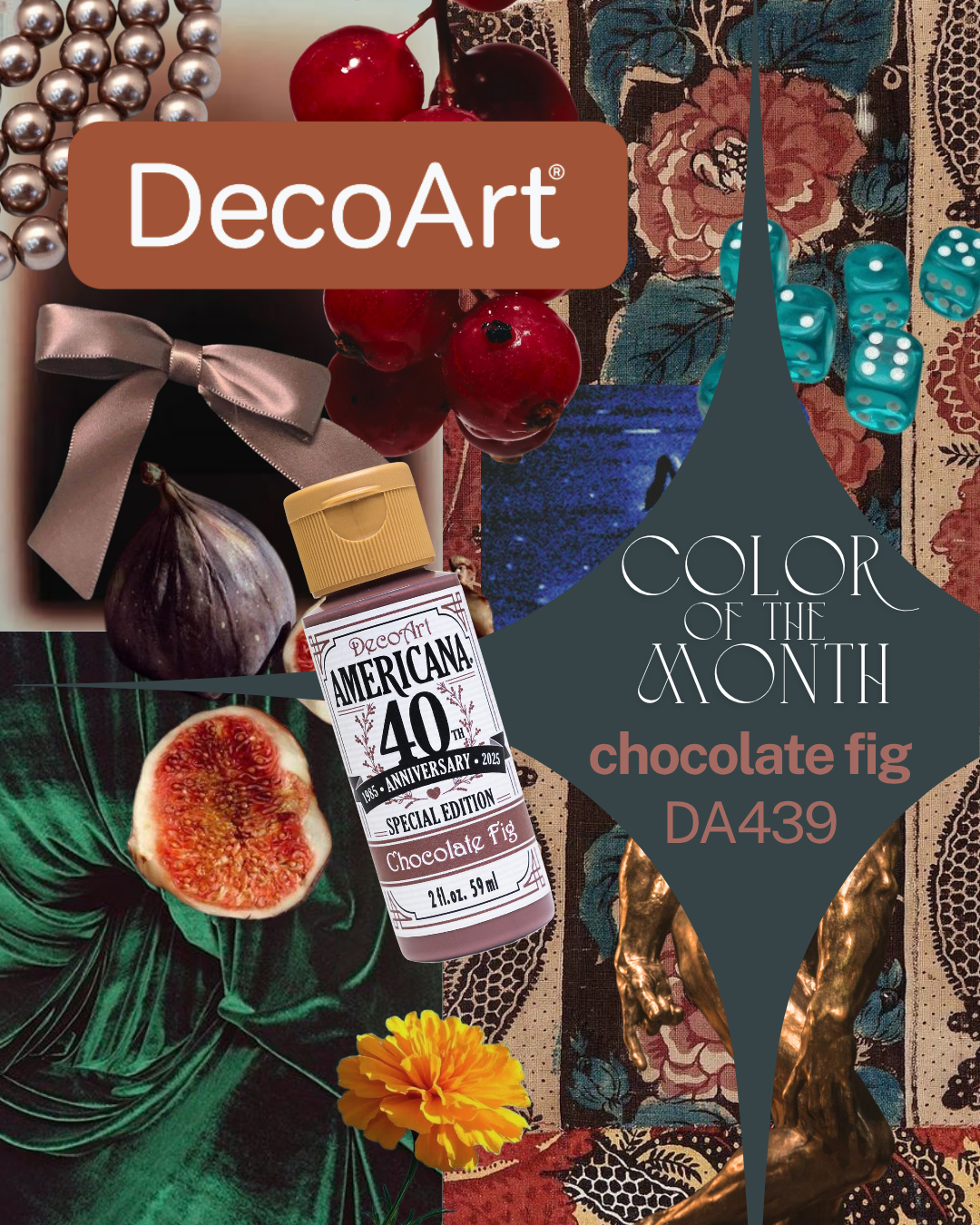May 21, 2025
What is Casein Paint and How to Use It

Casein is a water-based medium comprised of pigment mixed with a milk protein (casein) binder. This paint is one of the oldest media in the world, yet not many artists are familiar with it. Jack Richeson is one of the few companies producing this versatile paint through their Shiva series. Casein differs from other media, but also shares many of the same characteristics, which lends itself to many different techniques. It has wash capabilities of watercolor, the smooth opacity of tempera and gouache, and the richer textures of oils and acrylics. It dries very quickly to a velvety, matte finish, and over time, it becomes resistant to moisture.
Brief History of Casein Paints
The use of Casein paints dates back to prehistoric cave paintings. In ancient Egypt, casein was primarily used as a fixative for pigments in wall paintings, as a component in various glues, and played a vital role in the preservation and application of color in craftsmanship. Later, used by Byzantine and Roman artists. Recipes for the use of Casein as an adhesive, mural, and fresco paint date back to the 11th century. Artists often used casein in conjunction with gouache and other materials. In the 1930s, once the perfection of tubed Casein colors was more widely spread, artists realized the paint's characteristics were perfect for use with oil paints. Also, after World War II, it was used for the broader applications of camouflage, painting buildings, and wall color in homes. No other media compares with Casein's enduring versatality; however, Casien's wide use waned in the 1950s with the invention of water-based acrylic paints and it's adaption of use by artists in the 1960s.
Left: Detail of a Ram, Tomb of Khnumhotep, 1897-1878 B.C. Photo: Met Museum Right: Stela of Amenemhat and Hemet, Middle Kingdom, Early Dynasty 12, about 1956-1877 BCE, Egypt Photo: Art Institute of Chicago

Holy Bishop/Holy Pope, Cennino Cennini 1392-1396, casein on poplar wood Photo: Art Museum in Berlin, Germany

Solomon's Temple, Colorado, Samuel Coleman 1888, casein on canvas Photo: Seattle Artist League
Casein Painting for Beginners
If you have any experience painting with gouache, acrylic, oil, or watercolor paints, experimenting with casein for the first time won't be much different as it has qualities of each of those paints and can easily be incorporated with the same techniques. Some great benefits of Casein are:
- Fast drying
- Water Resistant (after drying)
- Versatile underpainting
- Texture building
- Oil-like appearance
- Matte finish
- Water-based (easy to work with and easy to clean)
- Cost-effective
- Suitable for various surfaces

James Gourney, casein color swatches Photo: Gourney Journey

"Altarin Orange", Michelle Muldrow 2014, casein on panel Photo: Mmuldrow.com
Materials
Paints
Casein paint can be made by the artist by using powdered pigments and a Casein Emulsion, but this process is time-consuming. Being able to use this vibrant paint right out of the tube takes away the guesswork and you can get to creating. JRC Casein products are made in Kimberly, Wisconsin and are sought out world-wide for this medium. With Casein paints being so versatile in usage, they are great for beginners as well as professional artists to add into their painting practice. As with oils and acrylics, starting with a limited color palette will build confidence in color mixing. One suggested palette is the Apelles Palette for beginners, which consists of white, black, red, and yellow. Whatever color palette you will use, it is always helpful to make or have a color wheel reference as well.
Mediums
Casein Emulsion can be mixed in to increase the adhesion to the surface. It is used to slow drying, which increases workability time. It is also used to increase brushabililty and thinning for washes and other techniques listed below.
Brushes
The choice of brushes are always an artist's preference. Almost any kind of brush can be used depending on the effect you want to create. Because it dries quickly, Casein can be hard on brushes, so make sure you clean them thoroughly with gentle soap and water or a commercial cleaner when your painting is over. A great soap to use for all studio purposes is the Jacks Soap, which will clean even dried on paint from brushes and clothes!

Jack Richeson, casein paint production Photo: Warren Martin
Tips
1. Use a wet paper towel between casein paint and palette. This will keep the paint workable for longer, especially for plein air painting.
2. Choose a rigid, non-oily surface like wood or a gessoed panel.
3. Establish drawing and value patterns with an underpainting of Casein.
4. Dilute Casein with water or Casein Emulsion to create washes or glazes.
5. Be aware that some Casein colors, especially reds, oranges, and yellows, may shift slightly after drying.
6. Try different brushes and brushstrokes. Keep a swatch test of those as well to reference when you begin a piece.
7. Use an eraser or a mixture of ammonia and water to correct errors on a gessoed panel.
8. Allow paint to cure completely before varnishing, especially when there are thicker areas of paint built up.
9. Look at other artists' work! Go to a gallery or a museum so you can see those brushstrokes and techniques in person.
10. Watch some tutorials by different types of painters. See what you are drawn to. Experiment and have fun!
Techniques
Learning from other artists and trying different types of techniques and brushstrokes is the best way to see what resonates with you as an artist. Once you learn the basics, you are able to expand on what you know to create something unique. Start with what you are drawn to after looking at a variety of artworks. For example, if you love classical painting, practicing Chiaroscuro and Grisalle will benefit how your paintings evolve. Or if you get lost in waves of color painted like Van Gogh, thick Impasto brushstrokes and Alla Prima techniques will be more of what will help you achieve that look. The way you lay down color on the surface will also impact the overall look of the painting. Whether it is gestural brushstrokes like Ruth Grotenrath, dotted marks like Georges Seurat, or color blocked areas like Sherrie Levine, oil and casein paints were the vehicles to attain these signature styles. There are some great online videos from talented artist Jame Gurnery, who loves to work with casein paints while Plein Air painting.

"The Hermit", Gerrit Dou 1670, oil on oak panel Photo: National Gallery of Art

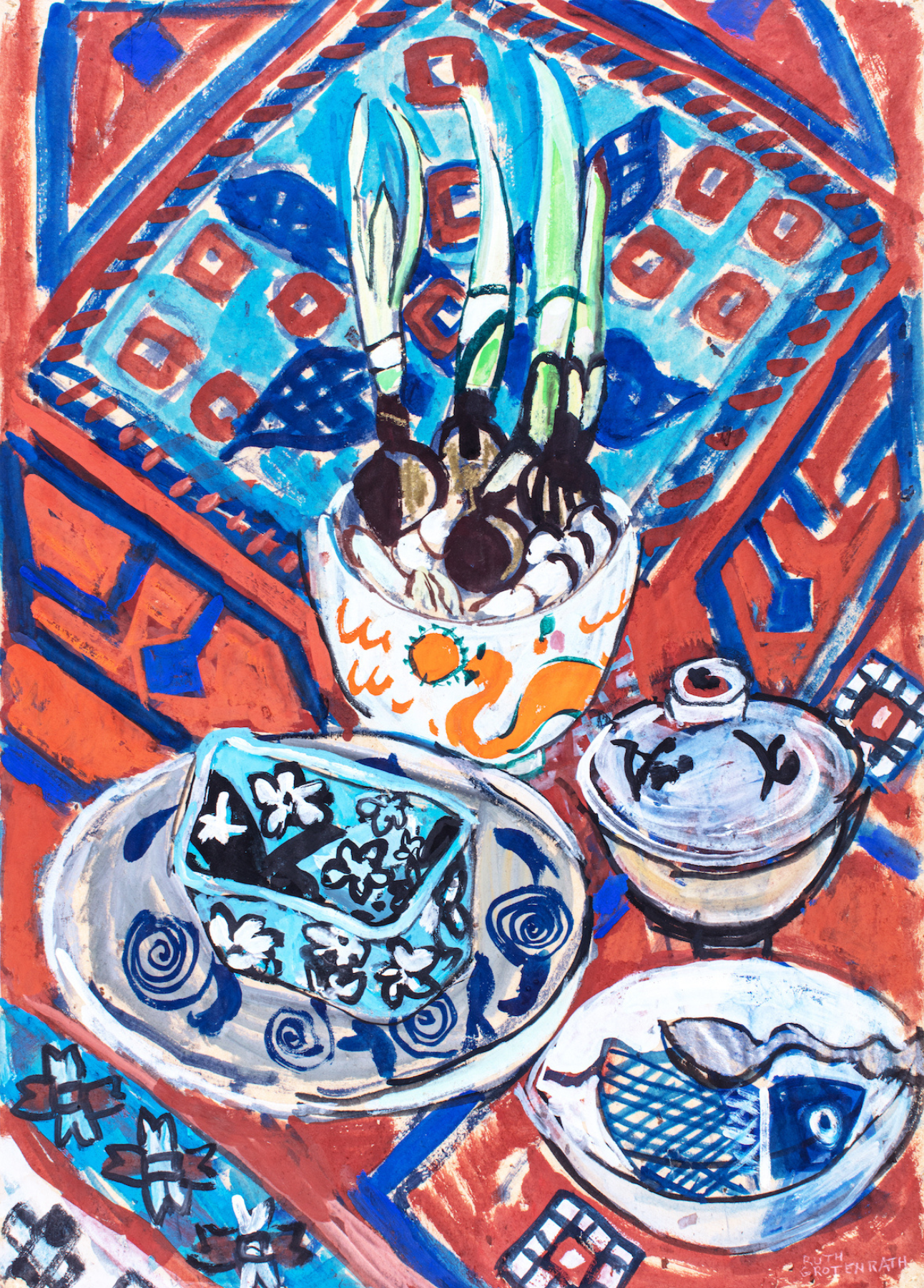
Left: "Self-Portrait", Vincent van Gogh, 1889, oil on canvas Right: "Bulbs Bowls", Ruth Grotenrath 1975, casein on paper Photos: Racine Art Museum

"Seascape at Port en Bessin", Georges Seurat 1888, oil on canvas

"Untitled", Sherry Levine 1985, casein on mahogany panel Photo: Art Institute of Chicago

"Alice, Cherubs, and Roses", Henry Lawrence Faulker, casein on panel Photo: ebth

"Hutton Street, Rhinecliff", James Gurney 2013, casein on panel Photo: Gurney Journey
Definitions of Techniques
Chiaroscuro - using strong contrasts in light and dark, usually with one light source in the whole composition.
Scumbling - applying a thin layer of paint over an existing layer using a dry brush to allow parts of the underlayer color to show through. It emphasizes the texture of the underlying brushstrokes, often giving a hazy effect.
Alla Prima - an Italian phrase meaning "at once" or "first attempt". This technique can also be referred to as a "wet on wet" technique where the painting is done in one sitting. This allows for a sense of movement and energy in the brushstrokes.
Glazing - applying thin, transparent layers of paint over dried layers. Allowing underlying colors to shine through, creating depth and luminosity.
Underpainting - the initial thin layer of paint color added to the surface to help establish composition, color values, and tonal relationships.
Impasto - applying paint thickly to the canvas with a brush or palette knife, creating a three-dimensional, textured surface. This also can include the "wet on wet" way of working.
Grisaille - from the French word "gray", this painting technique uses only shades of gray to create a monochromatic look of stone or sculpture. Used both as an underpainting and as a way to paint a finished work of art.
Plein Air - a French term meaning "open air", refers to the practice of painting outdoors, directly in the presence of the subject.
Related Products to Shop
Check out MORE related blogs!
Let's get social!
Sources:
Jack Richeson, May 23, 2025, https://richesonart.com/casein-faq/
National Gallery of Art, May 20, 2025, https://www.nga.gov/artworks?modal=agm-459671
Met Museum, May 25, 2025, https://www.metmuseum.org/art/collection/search/544551
The Art Institute of Chicago, May 25, 2025, https://www.artic.edu/artworks/127859/stela-of-amenemhat-and-hemet
Bildindex Art Museum, May 25, 2025, https://www.bildindex.de/
Seattle Art League, October 28, 2016, https://www.seattleartistleague.com/2016/10/28/what-is-casein/
James Gurney, YouTube, September 15, 2023, https://www.youtube.com/watch?v=UlGwpt_7X1k
Marty Owings, YouTube, September 19, 2020, https://www.youtube.com/watch?v=cTPVom_B_B8
James Gurney, Gurney Journey, April 8, 2022, https://gurneyjourney.blogspot.com/2022/04/casein-colors.html


